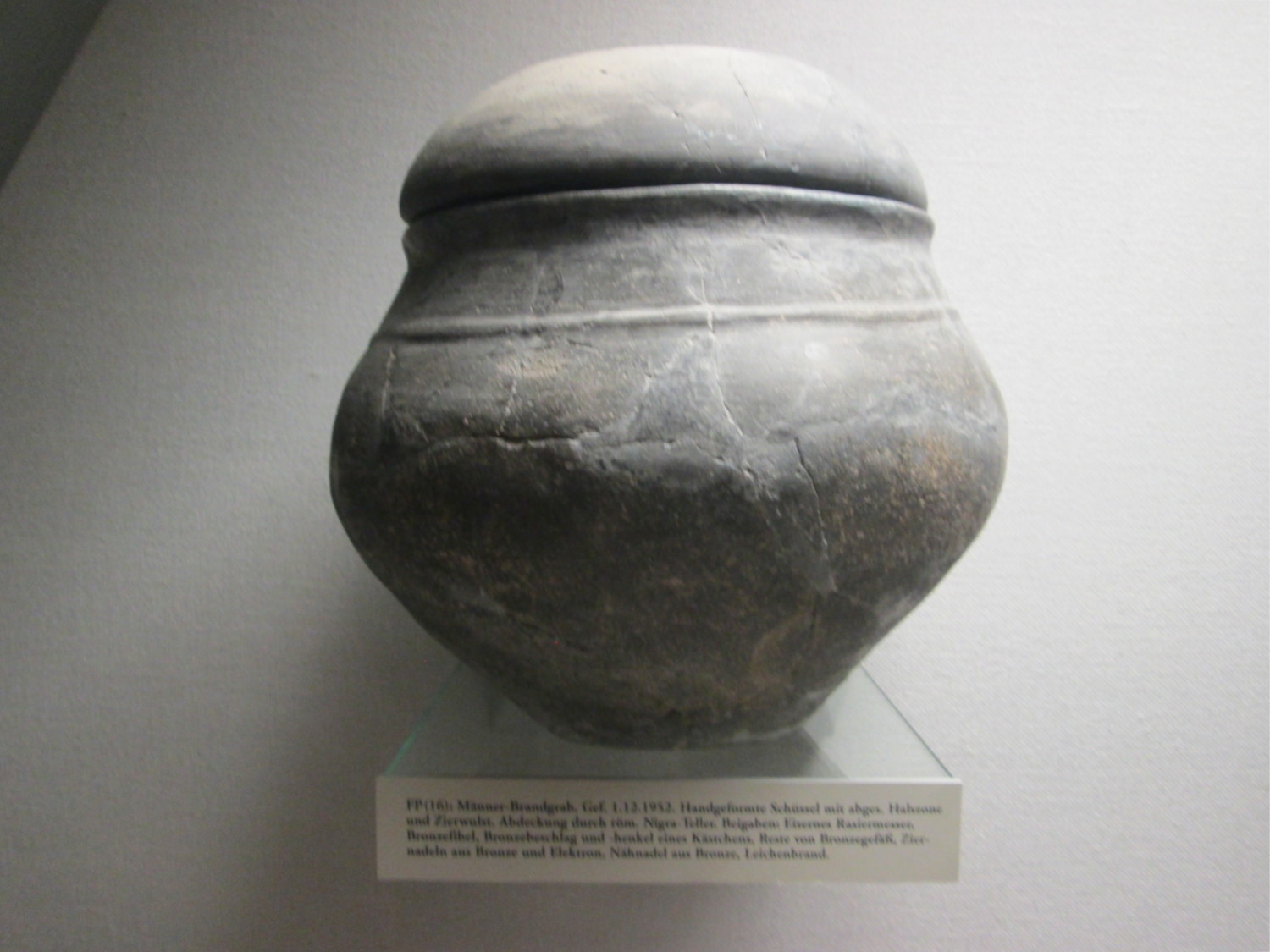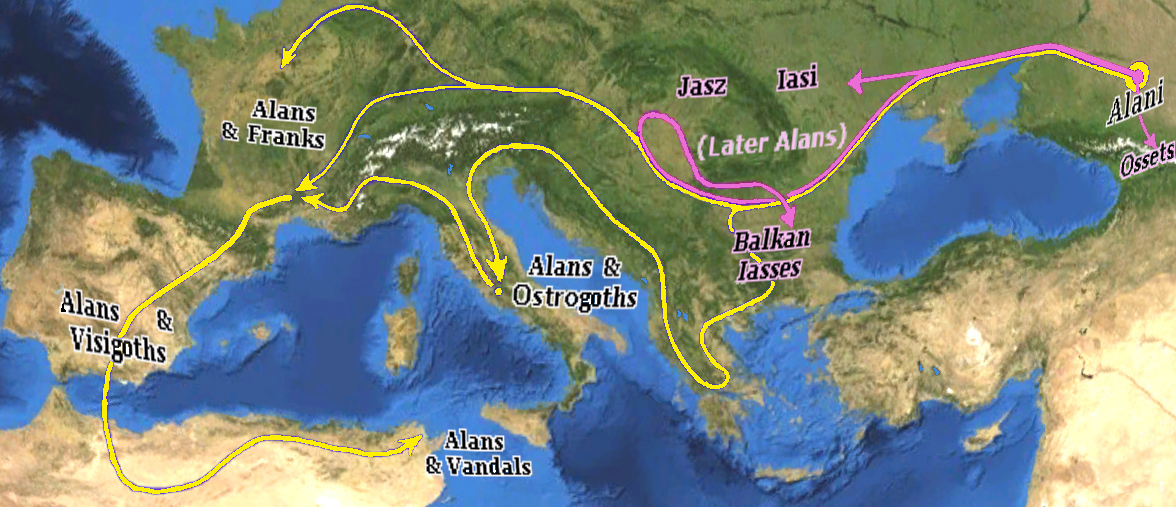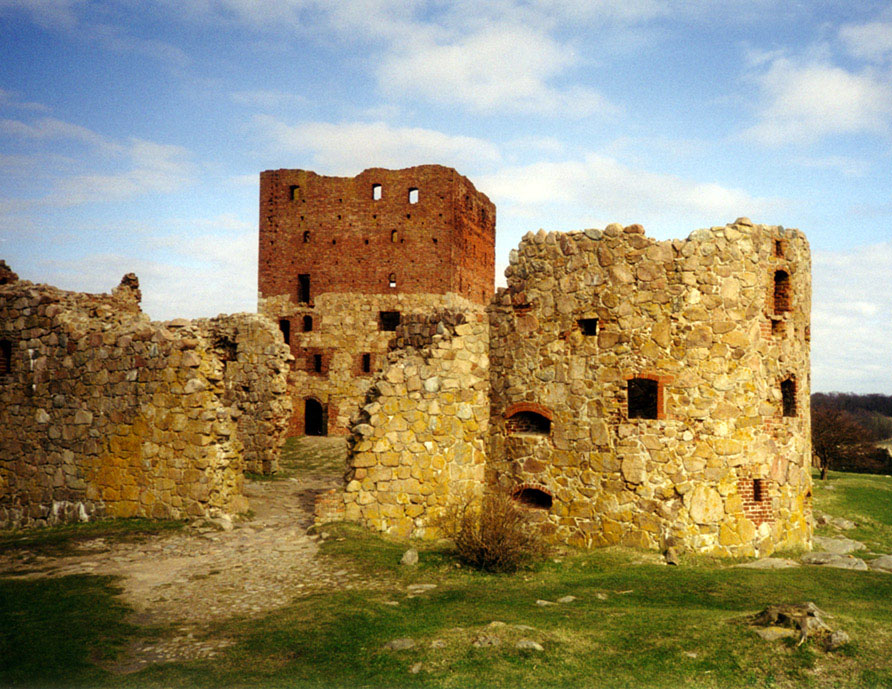|
Burgundian Kingdom
The Kingdom of the Burgundians, or First Kingdom of Burgundy, was established by Germanic Burgundians in the Rhineland and then in eastern Gaul in the 5th century. History Background The Burgundians, a Germanic tribe, may have migrated from the Scandinavian island of Bornholm to the Vistula basin in the 3rd century AD. However, the first documented King of the Burgundians, Gjúki (Gebicca), lived in the late 4th century east of the Rhine. In 406 the Alans, Vandals, Suevi, and possibly the Burgundians, crossed the Rhine and invaded Roman Gaul. The Burgundians settled as ''foederati'' in the Roman province of Germania Secunda along the Middle Rhine. Kingdom In 411 AD, Burgundian King Gunther (or Gundahar or Gundicar) in cooperation with Goar, king of the Alans, set up Jovinus as a puppet emperor. Under the pretext of Jovinus' imperial authority, Gunther settled on the western (i.e., Roman) bank of the Rhine, between the river Lauter and the Nahe, seizing the settlements ... [...More Info...] [...Related Items...] OR: [Wikipedia] [Google] [Baidu] |
Monarchy
A monarchy is a form of government in which a person, the monarch, reigns as head of state for the rest of their life, or until abdication. The extent of the authority of the monarch may vary from restricted and largely symbolic (constitutional monarchy), to fully autocratic (absolute monarchy), and may have Political representation, representational, Executive (government), executive, legislative, and judicial functions. The Order of succession, succession of monarchs has mostly been Hereditary monarchy, hereditary, often building dynasties; however, monarchies can also be elective monarchy, elective and Self-proclaimed monarchy, self-proclaimed. Aristocracy (class), Aristocrats, though not inherent to monarchies, often function as the pool of persons from which the monarch is chosen, and to fill the constituting institutions (e.g. Diet (assembly), diet and Royal court, court), giving many monarchies oligarchic elements. The Legitimacy (political)#Monarchy, political legitim ... [...More Info...] [...Related Items...] OR: [Wikipedia] [Google] [Baidu] |
Italy
Italy, officially the Italian Republic, is a country in Southern Europe, Southern and Western Europe, Western Europe. It consists of Italian Peninsula, a peninsula that extends into the Mediterranean Sea, with the Alps on its northern land border, as well as List of islands of Italy, nearly 800 islands, notably Sicily and Sardinia. Italy shares land borders with France to the west; Switzerland and Austria to the north; Slovenia to the east; and the two enclaves of Vatican City and San Marino. It is the List of European countries by area, tenth-largest country in Europe by area, covering , and the third-most populous member state of the European Union, with nearly 59 million inhabitants. Italy's capital and List of cities in Italy, largest city is Rome; other major cities include Milan, Naples, Turin, Palermo, Bologna, Florence, Genoa, and Venice. The history of Italy goes back to numerous List of ancient peoples of Italy, Italic peoples—notably including the ancient Romans, ... [...More Info...] [...Related Items...] OR: [Wikipedia] [Google] [Baidu] |
Roman Gaul
Roman Gaul refers to GaulThe territory of Gaul roughly corresponds to modern-day France, Belgium and Luxembourg, and adjacent parts of the Netherlands, Switzerland and Germany. under provincial rule in the Roman Empire from the 1st century BC to the 5th century AD. History During the Republic The Roman Republic's influence began in southern Gaul. By the mid-2nd century BC, Rome was trading heavily with the Greek colony of Massalia, Massilia (modern Marseille) and entered into an alliance with them, by which Rome agreed to protect the town from local Gauls, including the nearby Aquitani and from sea-borne Carthaginians and other rivals, in exchange for land that the Romans wanted in order to build a road to Hispania to improve troop movements to its provinces there. The Mediterranean settlements on the coast continued to be threatened by the powerful Gallic tribes to the north and in 122 BC the Roman general Gnaeus Domitius Ahenobarbus (consul 122 BC), Gnaeus Domitius Ahe ... [...More Info...] [...Related Items...] OR: [Wikipedia] [Google] [Baidu] |
Crossing Of The Rhine
The crossing of the Rhine River by a mixed group of barbarians which included Vandals, Alans and Suebi is traditionally considered to have occurred on the last day of the year 406 (December 31, 406). The crossing transgressed one of the Roman Empire, Late Roman Empire's most secure ''Limes (Roman Empire), limites'' or boundaries; as such, it has been considered a climactic moment in the decline of the Roman Empire, decline of the Empire. It initiated a wave of destruction of Roman cities and the collapse of Roman civic order in northern Gaul. That, in turn, occasioned the rise of three usurpers in succession in the province of Roman Britain, Britannia. Therefore, the crossing of the Rhine is a marker date in the Migration Period during which various Germanic peoples, Germanic tribes moved westward and southward from southern Scandinavia and northern Germania. Ancient sources Several written accounts document the crossing, supplemented by the time line of Prosper of Aquitaine, ... [...More Info...] [...Related Items...] OR: [Wikipedia] [Google] [Baidu] |
Suevi
file:1st century Germani.png, 300px, The approximate positions of some Germanic peoples reported by Graeco-Roman authors in the 1st century. Suebian peoples in red, and other Irminones in purple. The Suebi (also spelled Suavi, Suevi or Suebians) were a large group of Germanic peoples originally from the Elbe river region in what is now Germany and the Czech Republic. In the early Roman era they included many peoples with their own names such as the Marcomanni, Quadi, Hermunduri, Semnones, and Lombards. New groupings formed later, such as the Alamanni and Bavarians, and two kingdoms in the Migration Period were simply referred to as Suebian. Although Tacitus specified that the Suebian group was not an old tribal group itself, the Suebian peoples are associated by Pliny the Elder with the Irminones, a grouping of Germanic peoples who claimed ancestral connections. Tacitus mentions Suebian languages, and a geographical "Suevia". The Suevians were first mentioned by Julius Caesar i ... [...More Info...] [...Related Items...] OR: [Wikipedia] [Google] [Baidu] |
Vandals
The Vandals were a Germanic people who were first reported in the written records as inhabitants of what is now Poland, during the period of the Roman Empire. Much later, in the fifth century, a group of Vandals led by kings established Vandal kingdoms first within the Iberian Peninsula, and then in the western Mediterranean islands, and North Africa. Archaeologists associate the early Vandals with the Przeworsk culture, which has led to some authors equating them to the Lugii, who were another group of Germanic peoples associated with that same archaeological culture and region. Expanding into Dacia during the Marcomannic Wars and to Pannonia during the Crisis of the Third Century, the Vandals were confined to Pannonia by the Goths around 330 AD, where they received permission to settle from Constantine the Great. Around 400, raids by the Huns from the east forced many Germanic tribes to migrate west into the territory of the Roman Empire and, fearing that they might be ... [...More Info...] [...Related Items...] OR: [Wikipedia] [Google] [Baidu] |
Alans
The Alans () were an ancient and medieval Iranian peoples, Iranic Eurasian nomads, nomadic pastoral people who migrated to what is today North Caucasus – while some continued on to Europe and later North Africa. They are generally regarded as part of the Sarmatians, and possibly related to the Massagetae. Modern historians have connected the Alans with the Central Asian Yancai of China, Chinese sources and with the Aorsi of Ancient Rome, Roman sources. Having migrated westwards and becoming dominant among the Sarmatians on the Pontic–Caspian steppe, the Alans are mentioned by Roman sources in the . At that time they had settled the region north of the Black Sea and frequently raided the Parthian Empire and the South Caucasus provinces of the Roman Empire. From the Goths broke their power on the Pontic Steppe, thereby assimilating a sizeable portion of the associated Alans. Upon the Huns, Hunnic defeat of the Goths on the Pontic Steppe around , many of the Alans migrated w ... [...More Info...] [...Related Items...] OR: [Wikipedia] [Google] [Baidu] |
Gjúki
Gjúki (also ''Gebicca'', ''Gifica'', ''Gibica'', ''Gebicar'', ''Gibicho'' or ''Gippich'') was a figure of Germanic heroic legend. The historical Gibica is listed as the ancestor of the King of Burgundy, kings of the Burgundians, along with Gundomar I, Gundomar, Giselher, Gislaharius, and Gunther, Gundaharius, in the Lex Burgundionum (516 AD). While Gundaharius is attested in Roman sources, no other information about Gibica or Gundomar and Gislaharius is known and the ''Lex'' does not indicate how the kings are related. In later legend, Gibica becomes the father of the three subsequent kings. He is mentioned in Widsith as ''Gifica'' and as ''Gjúki'' in the eddic poem ''Atlakviða'', where he was the father of Gunnar (see Gunther). While the name Gibech is replaced with Dancrat in the Nibelungenlied, other German sources such as the Rosengarten zu Worms use this name for the father of the Burgundian kings. In the ''Prose Edda,'' Snorri Sturluson says that Gjúki was the father o ... [...More Info...] [...Related Items...] OR: [Wikipedia] [Google] [Baidu] |
Vistula
The Vistula (; ) is the longest river in Poland and the ninth-longest in Europe, at in length. Its drainage basin, extending into three other countries apart from Poland, covers , of which is in Poland. The Vistula rises at Barania Góra in the south of Poland, above sea level in the Silesian Beskids (western part of Carpathian Mountains), where it begins with the White Little Vistula (''Biała Wisełka'') and the Black Little Vistula (''Czarna Wisełka''). It flows through Poland's largest cities, including Kraków, Sandomierz, Warsaw, Płock, Włocławek, Toruń, Bydgoszcz, Świecie, Grudziądz, Tczew and Gdańsk. It empties into the Vistula Lagoon (''Zalew Wiślany'') or directly into the Gdańsk Bay of the Baltic Sea with a river delta, delta of six main branches (Leniwka, Przekop, Śmiała Wisła, Martwa Wisła, Nogat and Szkarpawa). The river has many associations with culture of Poland, Polish culture, history and national identity. It is Poland's most important wat ... [...More Info...] [...Related Items...] OR: [Wikipedia] [Google] [Baidu] |
Bornholm
Bornholm () is a List of islands of Denmark, Danish island in the Baltic Sea, to the east of the rest of Denmark, south of Sweden, northeast of Germany and north of Poland. Strategically located, Bornholm has been fought over for centuries. It has usually been ruled by Denmark, but also by Sweden and by Free City of Lübeck, Lübeck. The ruin of Hammershus, at the northwestern tip of the island, is the largest medieval fortress in northern Europe, testament to the importance of its location. Bornholm and Ertholmene comprise the last remaining Danish territory in Skåneland east of Øresund, having been Treaty of Roskilde, surrendered to Sweden in 1658, but Treaty of Copenhagen (1660), regained by Denmark in 1660 after Bornholm uprising, a local revolt. The island is known as ("sunshine island") because of its weather and ("rock island") because of its geology, which consists of granite, except along the southern coast. The heat from the summer is stored in the rock formation ... [...More Info...] [...Related Items...] OR: [Wikipedia] [Google] [Baidu] |
Scandinavia
Scandinavia is a subregion#Europe, subregion of northern Europe, with strong historical, cultural, and linguistic ties between its constituent peoples. ''Scandinavia'' most commonly refers to Denmark, Norway, and Sweden. It can sometimes also refer to the Scandinavian Peninsula (which excludes Denmark but includes a part of northern Finland). In English usage, Scandinavia is sometimes used as a synonym for Nordic countries. Iceland and the Faroe Islands are sometimes included in Scandinavia for their Ethnolinguistics, ethnolinguistic relations with Sweden, Norway and Denmark. While Finland differs from other Nordic countries in this respect, some authors call it Scandinavian due to its economic and cultural similarities. The geography of the region is varied, from the Norwegian fjords in the west and Scandinavian mountains covering parts of Norway and Sweden, to the low and flat areas of Denmark in the south, as well as archipelagos and lakes in the east. Most of the population ... [...More Info...] [...Related Items...] OR: [Wikipedia] [Google] [Baidu] |
Gaul
Gaul () was a region of Western Europe first clearly described by the Roman people, Romans, encompassing present-day France, Belgium, Luxembourg, and parts of Switzerland, the Netherlands, Germany, and Northern Italy. It covered an area of . According to Julius Caesar, who took control of the region on behalf of the Roman Republic, Gaul was divided into three parts: Gallia Celtica, Gallia Belgica, Belgica, and Gallia Aquitania, Aquitania. Archaeologically, the Gauls were bearers of the La Tène culture during the 5th to 1st centuries BC. This material culture was found throughout Gaul and as far east as modern-day southern Poland, Slovakia, and Hungary. Warbands led by the Gaul Brennus (leader of the Senones), Brennos Battle of the Allia, sacked Rome in 387 BC, becoming the only time Rome was conquered by a foreign enemy in 800 years. However, Gallia Cisalpina was conquered by the Romans in 204 BC and Gallia Narbonensis in 123 BC. Gaul was invaded after 120 BC by the Cimbri ... [...More Info...] [...Related Items...] OR: [Wikipedia] [Google] [Baidu] |









